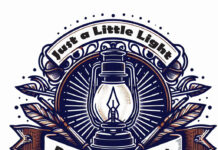Dona Kay Rule is a four-time qualifier for the National Finals Rodeo (NFR) with her horse, Women’s Professional Rodeo Association (WPRA) 2019 Horse of the Year, High Valor.
The Minco, Oklahoma, resident first qualified for the NFR in 2019 with the 2009 gelding and has stayed in the top standings each year since.
High Valor has been a steadfast partner for Dona Kay, and she values both his character and his athleticism.
The Women’s Professional Rodeo Association (WPRA) is the oldest women’s sports organization in the country. The association started in 1948 with a group of Texas ranch women who wanted to add a little color and femininity to the rough-and-tumble sport of rodeo.
“I’ve done this my whole life, training horses, running barrels, studying it; and being a student of the game,” Dona Kay said.
“High Valor is what you look for. He has the conformation, he has the real power, he has all kinds of try. Attitude and conformation are very important. But his kindness is my favorite thing about him.”
Keeping her horse healthy and happy while competing at the highest levels of barrel racing requires conscientious care and a good relationship with equine professionals.
No matter what discipline, good horsemanship is crucial to keeping your horse sound, Dona Kay said. This also means investing time in conditioning your horse before competing.
“Don’t just pull your horse out and rodeo when you haven’t ridden him in three weeks,” Dona Kay said. “It is not just about having fun. You must work at it.
“I’ve been gifted with being able to feel things in my horse, and when something doesn’t feel right, I have to count on my vet to be able to locate it,” Dona Kay continued.
“So, between my farrier and my veterinarian, I just don’t know if we could have gone as hard as we have for the last five years, and still had a sound horse out of it.”
Dona Kay goes to around 50 rodeos each year, which requires intentional care. She found her veterinarian after Valor got injured a few years ago. Her veterinarian sister-in-law introduced her to Amy Barnes.
“She just had magic eyes and magic hands, and she found the injury, a ligament strain,” Dona Kay said. “We got right on it, and Valor placed at Greeley, at Estes Park, and several rodeos immediately following Amy’s help.”
Having a primary veterinarian means being able to have a solid baseline on your horse when they are sound and healthy, and your vet can better recognize when something is off that needs investigating.
“It’s a big deal to have a great relationship with your veterinarian,” Dona Kay said. “You should be able to talk with them, tell them what you think, and then you should be able to be quiet, listen to what they say, and formulate a group solution.”
Dona Kay believes in excellent quality feed. She has a simple, regular maintenance program that hinges on paying attention to the horse’s wellbeing every day.
“When we have a red flag or a yellow flag, or something that doesn’t seem quite right, we look at it pretty carefully,” Dona Kay said.
Part of her maintenance routine includes regular administration of a joint supplement that replaces lost or damaged synovial fluid, aiding in joint health.
+++30+++





